Athens: The First-Time Visitor’s Essentials
Ten must-do experiences in Athens, from...
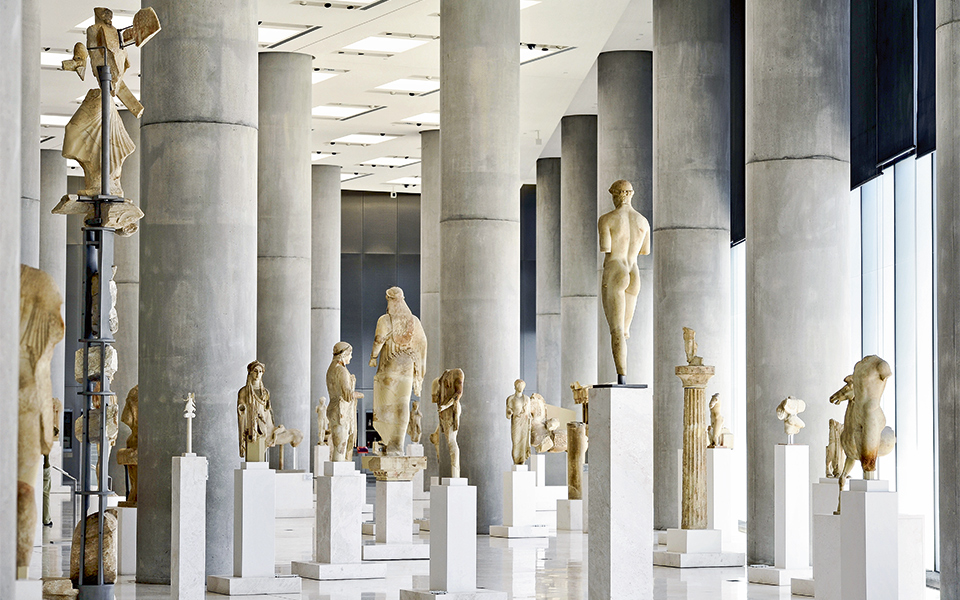
The Archaic Acropolis Gallery of the Acropolis Museum
© Vangelis Zavos
A few days ago, I visited the Acropolis hill. Well, sort of. Due to the coronavirus lockdown, I couldn’t actually go there. But I was able to while away a fascinating few hours gazing at the ancient structures and learning about them on a virtual tour. Today, I’m following that visit up with a virtual visit to the Acropolis Museum.
Designed by Bernard Tschumi and Michael Fotiadis and located just below the hill of the Acropolis of Athens, the museum is considered by many to be one of the world’s best of its kind. In fact, ever since it opened in June 2009, it’s been seen as a strong argument in support of Greece’s longstanding campaign for the repatriation of the Parthenon Marbles housed at the British Museum. The missing pieces would be presented along the museum’s other 3,000 artifacts from the ancient sanctuary, displayed over 14,000 square meters of brightly-lit and modern exhibition space.
The museum keeps developing too. Last year, it opened a new permanent exhibit: the archaeological excavation of the ancient Athenian neighborhood located beneath the building.
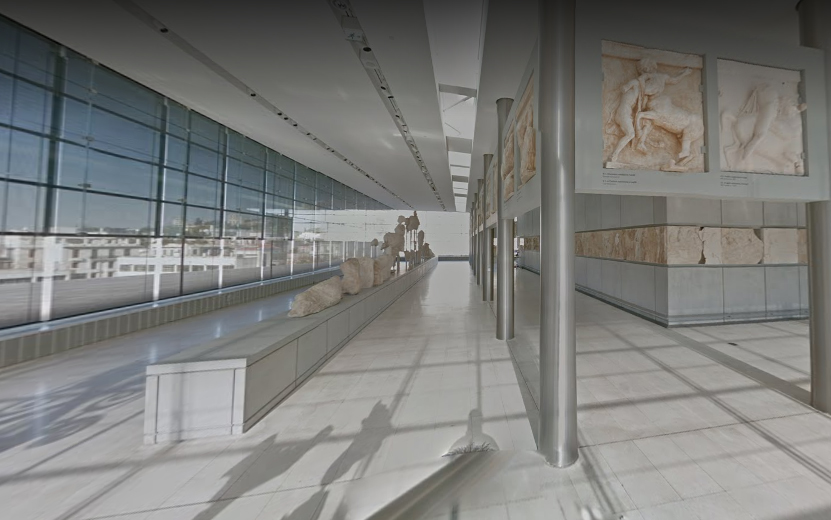
Screenshot of the Parthenon Gallery, from Google Street View, via Google Arts & Culture.
This virtual visit to the museum is provided by Google Arts & Culture, a platform featuring content from over 2000 leading museums and archives worldwide.
The Acropolis Museum is one of the institutions that have partnered with the platform to provide a virtual experience through Google Street View. From a page introducing you to the museum, you can navigate through two of the museum’s most famous galleries: the Archaic Acropolis Gallery, filled with sculptures and smaller artifacts dating from the 7th century BC to about 480 BC (the end of the Persian Wars), and the Parthenon Gallery, featuring the famous 5th c BC artworks from the Parthenon by antiquity’s most famous sculptor, Pheidias.
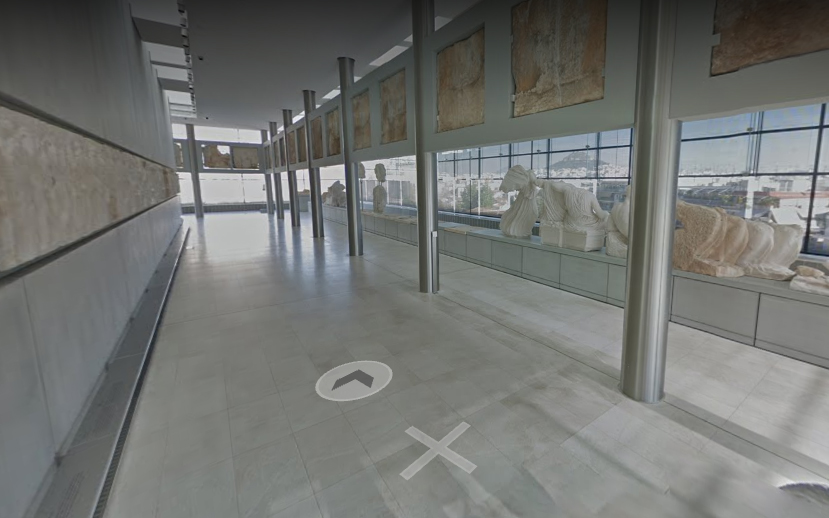
Screenshot of the Parthenon Gallery, from Google Street View, via Google Arts & Culture.
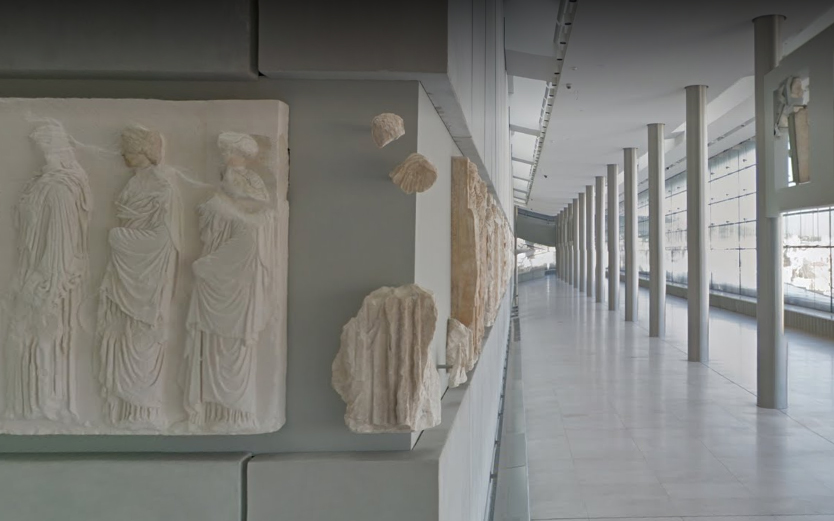
Screenshot of the Parthenon Frieze, from Google Street View, via Google Arts & Culture.
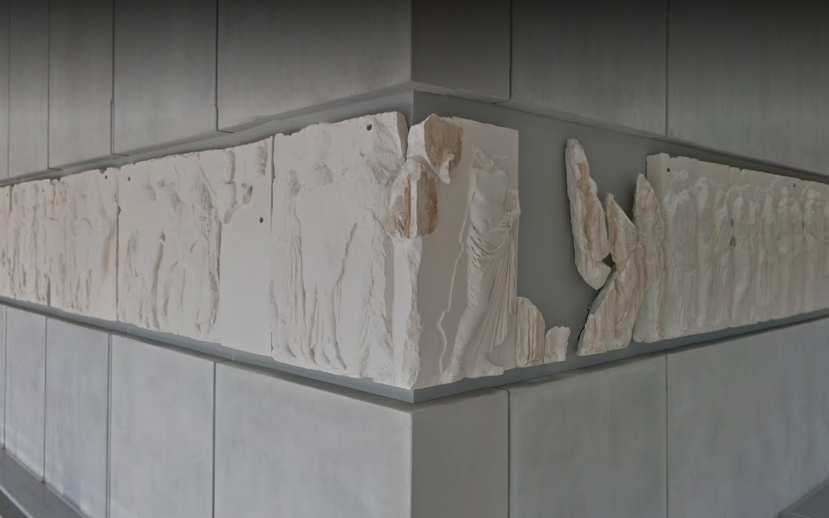
Screenshot of the Parthenon Frieze, from Google Street View, via Google Arts & Culture.
Clicking on Google’s yellow Pegman brings me into Street View, and I land on the museum’s third floor in the Parthenon Gallery. The images have been captured on a sunny day, and the renowned gallery is bathed in soft natural light pouring in through the glass walls with their uninterrupted view towards the ancient sanctuary on the hill above.
This floor has been designed to mirror the layout of the Parthenon, with the Pheidias’ sculptures laid out as they once were around the temple – although lower, closer to eye level, as they were originally placed around the top of the Parthenon for gods – not humans – to admire.
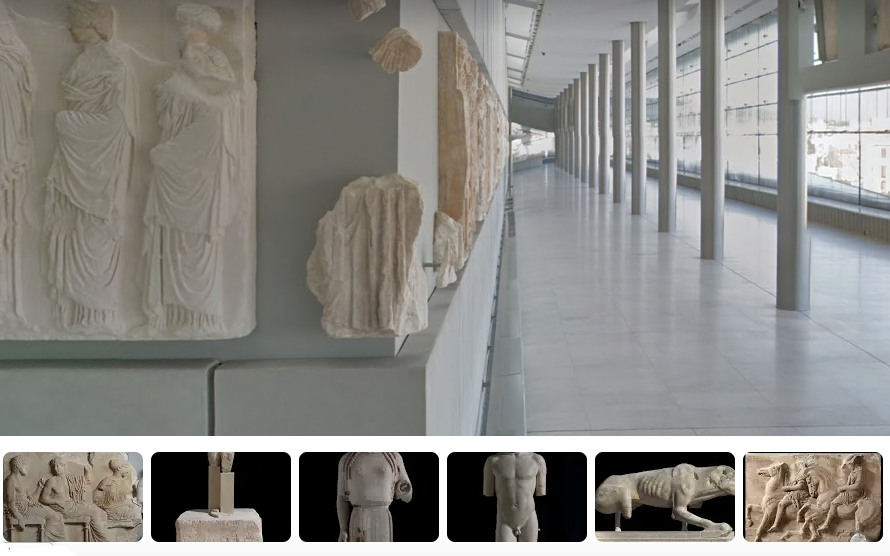
Screenshot of the Parthenon Gallery, from Google Street View, via Google Arts & Culture. Singled out artifacts are displayed at the bottom, directing the visitor to their location in the museum.
The first thing I see is the southwest corner of the gallery, and the piece of artwork closest is a piece of the metopes (the carved slabs above the temple’s outer row of columns) featuring a fierce battle between a centaur and a Lapith from the Centauromachy.
To begin my tour, I decide to take two “walks”, circling the entire gallery twice. On my first lap, I stay near the glass walls, and zoom to study the mythical scenes depicted on the metopes and the pediment sculptures.
Aside from the Centauromachy, I make out scenes from other mythical battles: on the east side, the Olympian gods battle the giants in the Gigantomachy. On the west side, zooming makes the images a bit blurry, but I can still make out scenes of Athenians fighting the Amazons in the Amazonomachy.
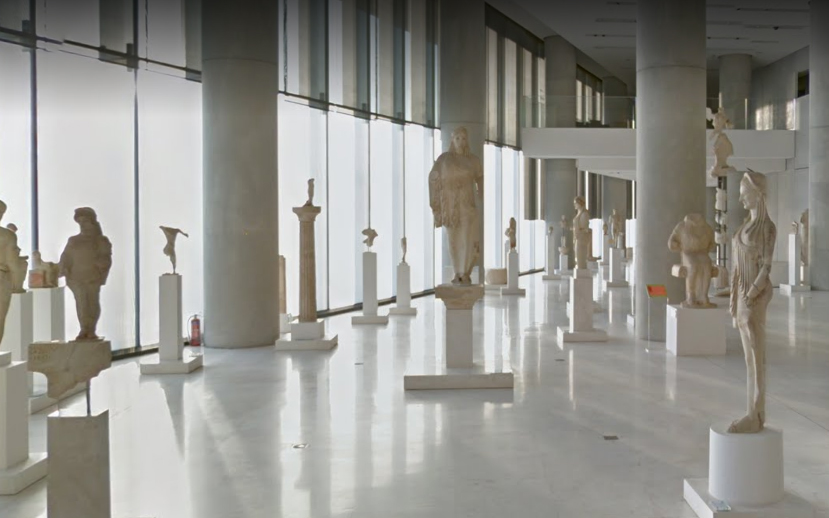
Screenshot of the Archaic Gallery, from Google Street View, via Google Arts & Culture.
On a second lap, I take my time studying the world-famous Parthenon frieze, once placed above the inner columns of the temple. While a number of the original blocks are missing – many removed by Lord Elgin in the 19th century – cast replicas of the surviving pieces have been made in their place to, almost, complete the frieze (over 130 meters of the 160-meter frieze survives until this day, but about 80 meters are currently at the British Museum in London, while some pieces are also displayed at other museums around the world).
You can easily tell which pieces are the originals, by their yellowish color. Among the best preserved pieces are the carvings depicting the procession at the Panathenaia festival, held in honor of the goddess Athena, which are easy to follow.
On my screen, below the “Street View” window, a few artifacts have been singled out. Clicking on one of them directs me to a block on the west side of the frieze featuring two riders. On one of them, the caption says, green traces of green color have been found, proving that the artwork was once painted.
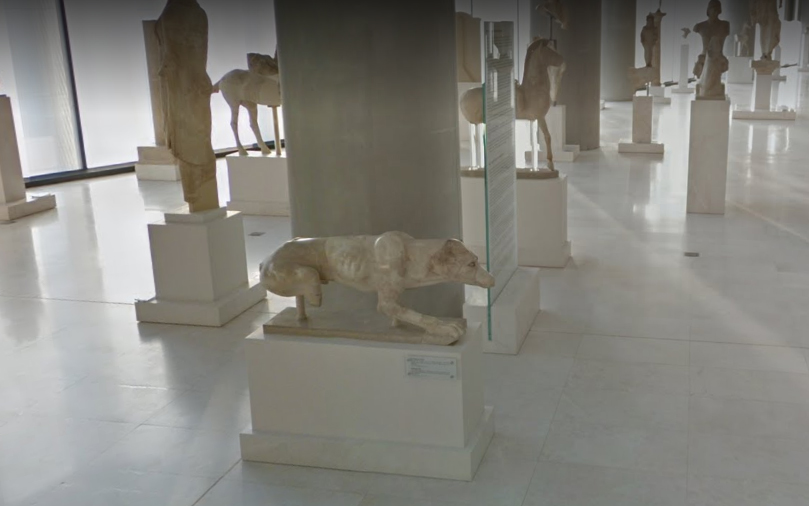
Screenshot of a statue of a hunting dog, from ca 520 BC, in the the Archaic Gallery of the Acropolis Museum, from Google Street View, via Google Arts & Culture.
Clicking on other artifacts takes me downstairs, to the Archaic Acropolis Gallery, where an impressive number of marble statues from earlier periods are on display. Like on a real visit to the museum, you can view the exhibits from all sides.
I “stand” for a while in front of a statue of a hunting dog, from 520 BC, which is thought to have once stood at the entrance to the sanctuary of Artemis Brauronia on the Acropolis. Its defined ribs look so smooth, I can almost imagine reaching out my hand and running it over the stone.
Final Review
While a virtual visit isn’t comparable to a real-life visit to the museum, it does give you a much better idea of the layout of the galleries and what you will see on a real visit than any photographs could. Unfortunately, zooming does not always allow you to read the information plaques below the artworks, so you are left to guess or to Google what you’re looking at at times. However, the information provided for a number of singled out artifacts still makes it a worthwhile educational experience.
For additional information about the museum and some of its most famous treasures, visit the Acropolis Museum website.
The virtual walk through the Acropolis Museum through Google Arts & Culture is free. Find it here.
Ten must-do experiences in Athens, from...
A 3D reconstruction by Oxford researcher...
Renewed negotiations, shifting public opinion and...